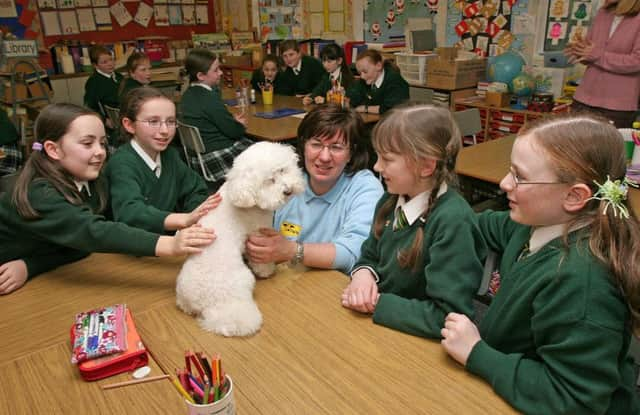Family: pet safety


But while some dogs are placid enough to put up with children annoying them, many are not - and even the most mild-mannered of dogs can turn and snap at a child if pushed enough.
Yet a new survey has found that 44% of parents would leave a child under the age of 11 alone with a dog, and 12% would leave a pre-school child (aged under five) on their own with a dog.
Advertisement
Hide AdAdvertisement
Hide AdFor that reason, the Dogs Trust charity, which carried out the research, is urging parents to never leave a child alone with any dog as part of its new Be Dog Smart dog safety campaign.
Its research found that while more than a third of children come into contact with a dog every day, 30% are afraid of them. And although 60% of parents say they teach their children to stay safe around dogs, nearly all of them (98%) were unaware that there are at least 20 signs that a dog may feel uneasy and could be pushed to become aggressive or bite.
Indeed, more than half of the children questioned thought a growling dog was smiling, and a fifth of parents have seen their child sit or lie on a dog, 19% kiss a dog’s nose, 18% pull a dog’s tail and 14% shout at or hit a dog.
The Dogs Trust points out that dog attacks are on the rise, and the rate of hospital admissions for dog bites is highest among the under nines age group - 1,160 children were hospitalised during 2013-2014.
Advertisement
Hide AdAdvertisement
Hide AdThe dog population is on the increase, with 8.9 million dogs currently living in the UK, and Dogs Trust chief executive Adrian Burder warns: “Children can come into contact with dogs every day and being around dogs can have so many wonderful benefits, but the simple fact is that all dogs have teeth and any dog can bite or snap if worried, scared or hurt.
“So, to reduce the number of dog attacks, whether you’re a dog owner or not, it’s important that we all know and teach our children, grandchildren, pupils and friends how to behave around dogs.”
He points out that most children remember their Green Cross Code, and says the Dogs Trust wants Be Dog Smart to be just as well known.
“Our hope is that simple advice, such as never leave your child alone with any dog, never tease a dog, don’t approach a dog you don’t know, and always ask the owner before you approach a dog could prevent more dog attacks.”
Advertisement
Hide AdAdvertisement
Hide AdAs part of the safety campaign, Dogs Trust education officers will go into schools, libraries and community centres across the country delivering Be Dog Smart workshops. Key advice will be given to anyone with responsibility for children, ranging from parents to sports coaches, plus children themselves.
The NCT parenting charity is supporting the Be Dog Smart campaign, and NCT senior policy adviser Elizabeth Duff says: “A dog can be a happy part of family life, but taking a few simple precautions will help to avoid your children incurring any avoidable injuries.
“The Be Dog Smart guidance offers parents some great tips to keep new babies and toddlers safe around dogs and we would encourage all parents to take a look at them.”
DOGS TRUST’S GUIDE TO ‘BE DOG SMART’:
B - Beware of disturbing dogs that are eating or sleeping.
E - Even if for fun, don’t ever tease a dog.
D - Don’t approach a dog with no owner around.
O - Only stroke a dog when the owner says you can.
G - Get the dog to sniff your hand first, then stroke gently.
Advertisement
Hide AdAdvertisement
Hide AdS - Strange dog approaching? Stand still, look away, cross your arms.
M - Move calmly and quietly around any dog.
A - All that hugging and kissing - you might like it, dogs don’t.
R - Remember all dogs have teeth.
T - Treat dogs with respect and they will respect you.
For more information, and to book a Be Dog Smart workshop, visit www.bedogsmart.org.uk